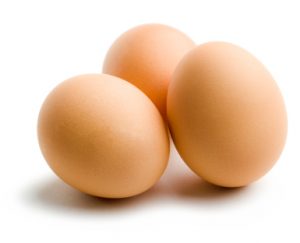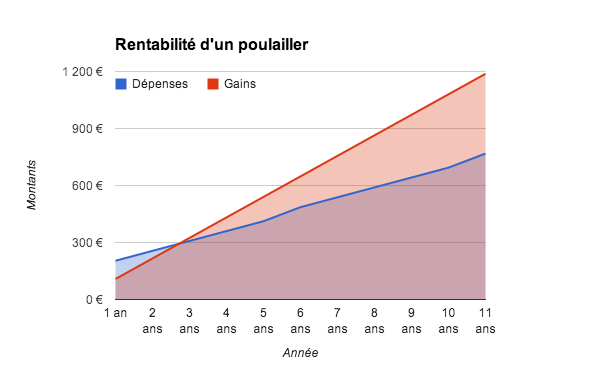A bit strange title, for an article a little different from the usual articles of this blog. The subject and the approach here are intended to be more relaxed and less academic, but you will see, I hope for it, where I am going through this post. But let’s get started without further ado. It all started last summer. No doubt knocked out and groggy in the sweltering August heat, my wife and I purchased a city chicken coop . And of course, we have decorated this little house with 2 pretty laying hens, one gray and one white. I will keep silent here the names of these 2 ladies in order to allow them to keep the anonymity which suits them so well :). Thanks to these new arrivals, we have since been entitled to a few fresh eggs on a very regular basis, which we enjoy as much as possible.
At a time when organic products are selling more and more, for prices that are not always justified, at a time when we do not always know what we are eating, producing directly from home a food such as its eggs could be perceived as an interesting investment . So, good or bad idea? Let’s see this concretely.
From our experience, the following investments were necessary:
This gives us an initial cost of €152 (coop and hens), supplemented by an annual cost of €52 (straw and grain).
Our hens each lay almost one egg a day when the sun is out, i.e. 2 fresh eggs daily. But the figure approaches 0 when winter arrives and the days are shorter. Over a full year, the harvest will amount, from our short experience, to a figure somewhere between 180 and 200 fresh eggs per hen, or between 360 and 400 eggs for our 2 layers. Note in passing that the varieties of hens we have chosen are not the most prolific.
The price of a fresh organic egg varies between 30 cents and 50 cents depending on the brand, place of purchase and size. Over the year, as long as we are big egg lovers, this gives us a harvest:
That’s still more or less one egg to eat a day for a year for a single person, enough to verge on an overdose :)! Fortunately, there are 4 of us: between omelettes, pastries, pancakes or waffles… We have plenty to do!
Then, you should know that a hen lays an average of 5 years. It is therefore necessary to change it twice a decade if we want to continue to collect a few fresh eggs. Over this period, the chicken coop will therefore pay for itself during the third year following the purchase. The graph below illustrates this point.
This profitability is purely theoretical, in that you may not eat as many fresh eggs. But the important thing is probably elsewhere…
Because of course, it is absolutely not for the financial aspect that we invested in a chicken coop! It’s quite simply… for the pleasure and the perks that the presence of a few hens offers to our daily life. Here are a few jumbled up:
If you think that the arrival of a small barnyard in your garden will cause discomfort for your neighbors, I would point out that the hens are generally very quiet. Our neighbors want to take the plunge too! And if it’s the cry of the rooster that scares you, I remind you that it is absolutely not necessary to have one for your hens to lay a few fresh eggs regularly.
Do you know any friends who have already taken the plunge of installing a chicken coop in their home? Would you like to enjoy the pleasure of harvesting a few fresh eggs at home?



